Original link: https://shyrz.me/news-19-constant-growth/

22·08·14 Issue No. 19

Hello everyone!
There is a folk saying in our country “Autumn Tiger”, which means that if there is no rain on the day of the beginning of autumn, there will be hot weather for up to 24 days, and now it is extended to the hot weather after the beginning of autumn. Hope you can also find a coolness in the hot autumn sun.
For the sake of space, there are only two selected articles in this issue. “Growth and Expansion: The Difference and Why It Matters” explains how a start-up should make this strategic decision; “Why is Europe and not China leading the gunpowder war?” ” explains the issue from a technical perspective along the historical lines. Hope that inspires.
Growth vs Expansion: The Difference and Why It Matters
→ Original link: Growth vs scaling: What’s the difference and why does it matter? / Patrick Whatman / Spend Journal / June 8, 2021
In the modern business world, nothing is more important than growth. Even long-term stock market fixtures like McDonald’s and General Motors are judged by their quarterly growth rates. And failure to grow can be catastrophic.
But for young companies, especially startups, there is also a strong quest for scale.
How can a business not just grow, but grow exponentially?
This is often an approach that puts the cart before the horse. Young startups need to build a product, create a fleshed-out brand image, and develop a market before they can think about hypergrowth.
But we’ll get into that more soon. In this article we’ll explore the difference between growth and expansion, and we’ll dive into some of the key challenges of scaling companies and how companies should achieve this kind of crazy growth.
growth and expansion
We start with the common difference between the two terms. Generally, we think of growth as linear: a company adds new resources (capital, people, or technology), and its revenue increases as a result.
Scale, by contrast, refers to an increase in revenue without a substantial increase in resources. Processes that “scale” are those that can be done at scale without extra effort – if I send an email to 10 people or a million people, it costs me roughly the same amount of energy. That’s why businesses use email marketing heavily – scaling is extremely efficient (example: SaaS email marketing template An insurance company scales its business operations by simply switching to a cloud-based business phone system ).
But that’s just a technical difference between the two words, let’s take a closer look at how both are in practice.
grow business
Generally speaking, growth is seen as the definition of a successful company and refers to increasing revenue as a result of doing business . It can also refer to growth in other aspects of the business, such as the number of employees, number of offices, and number of customers served – which are almost always related to growth in revenue.
However, the biggest problem is that it requires a lot of resources to sustain continued growth .
Take an advertising agency that currently has five clients but is about to pick up another five. Increasing the number of companies it sells will certainly bring in more money, but there’s a chance the company won’t be able to get the job done without hiring more people.
Because of this, financial growth can only be achieved when losses are larger .
Companies that provide professional services, such as the advertising agency above, will always have to deal with this. Taking on more customers leads to the need for additional employees to provide support – while adding more customers brings more revenue, it also has to increase costs.
Expand business scale
Modern founders have become obsessed with the idea of scaling due to the costs associated with growth.
The key difference with growth is that scale is achieved by increasing revenue without incurring significant costs. While multiplying customers and revenue, costs only increase incrementally as needed.
The difference between growth and expansion becomes clear when a company is no longer a startup, but also not a large company. At this critical stage, businesses will have to decide whether to grow at a normal rate or switch to faster company expansion .
If it is to have a chance of lasting impact on the entire industry and society, it must do so without accumulating a lot of overhead.
However, there is no magic key to scaling —if there is one, starting a million-dollar company is less glamorous.
→ Further reading:
- Startups: How to Easily Manage Your SaaS Payments
- The CEO’s Guide to Expense Management for Startups
- How to Allocate and Manage a Startup’s Marketing Budget
- Fundraising Strategies: How to Raise Venture Capital for Startups
Startups and Scaled Enterprises
Here are two more terms that are often confused. You may already have a grasp of what a startup is, but what about a scale-up?
According to Scaleup Nation’s definition , a scaleup is “an entrepreneurial enterprise that has achieved ‘product-market’ matching and is now facing a ‘second valley of death’ or exponential growth.”
In other words, once a startup has proven it has a product that people want, it’s time to bring that product to the masses . This often requires significant investment in new people, setting up offices in different markets, and a lot of publicity in the form of educational webinars , attending trade shows, finding opportunities, and other strategies.
This actually sounds a bit against our previous definition of “scaling” – increasing revenue without increasing investment. But, if successful, a scaled business will grow exponentially with only linear or marginal investment. Essentially, if they can open up new markets and reach new audiences, scale businesses will grow faster than ever was possible.
Key Challenges to Scale Operations
Recent research suggests that there are several trends that should perhaps worry CEOs— two-thirds of the fastest-growing companies fail . You might think that reaching a state of hypergrowth is doomed to success. It doesn’t appear to be the case now.
Other macro research shows that slow-growing companies tend to outperform fast-growing companies in the long run.
That’s not to say you shouldn’t pursue rapid growth. But you need to do it in a smart way. You need to be the best at it.
Imagine a business going from a start-up to a scale business overnight. What used to be a local company with about 50 people in a comfortable office is now a business that is expanding globally.
The plan is to double in size every 12 months. So in three years, you’ll grow from 50 full-time employees to 400. And some are growing much faster than that.
So, what are the key challenges posed by this scaling up?
you need to invest
This is the most obvious prerequisite: Most young companies now require significant investment (often from venture capital) to scale. This usually comes in the form of a Series B or Series C investment.
Early funding rounds are used for MVP development and building market fit, and for rapid expansion if they can get further funding.
You need scalable processes
The typical scale business has a great product – it attracts far more buyers than the current marketplace serves. However, because of their rapid growth as a start-up, many internal processes were not designed to scale .
The most obvious of these is the company fee policy . As a small business, you don’t really need an expense policy. If someone needs to travel or buy something, they can address it directly with the founder. But once you have multiple offices and several people traveling at the same time, this is no longer an option.
Find out if your fee policy can be expanded
You have to embed a company culture
The culture of a startup is often formed naturally. Again, everyone works in the same space, you recruit carefully, and most people on your team share the same goals and passions.
But once you’re global, it’s hard to control. You don’t have the same level of intimacy with new team members, and they can’t easily draw from the energies and values of the current team.
For this reason, businesses at scale need to consider their employee onboarding strategies particularly carefully. This is the perfect opportunity to share the company’s vision , embed core values, and ensure that new hires fit in perfectly.
Employees need autonomy, managers need control
This should be a guiding theme for all businesses, but especially in the awkward early stages of scaling. Managers and HR suddenly have much less access to team members, and they can only trust team members blindly. And team members find it difficult to get help from management and HR because there are so many new hires to take care of, and they may not even be on the same continent.
This dynamic is tricky without good scaling tools . Online payroll tools, expense management and productivity systems can all help decentralize information while centralizing control.
how to expand
It’s impossible to offer a single “secret” to exponentially growing your company. But for those looking for clues and hints, here are some great guidelines:
- Aberdeen – Investing in company culture
With the expansion of the scale, new talents poured in. This is good! But most startup leaders spend years crafting a cohesive company culture , and you need to make sure you don’t let it slip through. “As you scale, core values can be lost or confused. Renewing your dedication to those values will attract better talent, help you acquire the best technology for analyzing and managing financial data , and clearly define how to continue scaling. “ - YokelLocal – Start small and hype yourself
If the plan is to expand, you have to let go of most of the little things that take up your time. Founders, CFOs and other leaders please stop worrying about saving every little buck and focus on the big picture. “Find someone! You’re likely to find that they’re better and more efficient at these tasks than you, no matter what. Now you can spend your time on that part of the business that requires the right skills from you— What you’re really good at!” - HelloSign – focus on core strengths
It’s easy to believe that diversification will be your catalyst for scale. Introducing a new product line or adding additional services will unlock a lot of new revenue. But, “If a business grows through a series of ad hoc actions and decisions, those actions and decisions will start to crumble as you scale. Small gaps will become chasms. Confusion and inconsistency will become There is no way to deliver a consistent product or experience if employees play by their own rules of the game. Achieving scale requires some level of repeatable and predictable systems. Refining and evolving these systems is what companies can do from thousands of customers way to reach millions of customers. ” - Startups.co.uk – investing in process management
Similar to outsourcing, process management requires you to hand off the little things to others. The point here is to make sure the process is documented and others can quickly access it without showing it step by step. “As a small business owner, you probably have direct lines of communication with all your employees. But as your business grows, you have to turn your attention to strategic issues and leave the day-to-day running of the business to others.”
growth, scale, success
Hopefully this article helps unravel the nuances of growth and scaling. In fact, both are important, and for companies, the distinction is often a matter of timing.
But as we’ve seen, there are some clear steps businesses can take to prepare for the expansion phase. Establish clear (digital) processes to make information readily available anywhere, and try not to rely on one-to-one communication for anything important.
From there, successful expansion is part planning, part hard work, and a lot of good luck.
Why did Europe, not China, dominate the gunpowder wars?
→ Original link: Why Did Europe and Not China Dominate Gunpowder Warfare? / Erik Engheim / Medium / August 5, 2022
 The firing mechanism of the arquebus
The firing mechanism of the arquebus
When China went head-to-head with European powers in the 16th century, they soon discovered that European gunpowder weapons were far superior to what the Chinese had themselves. How did China fall behind in the technology it pioneered? What’s the secret to giving Europeans an edge in weaponry and military tactics?
China developed black powder in the first millennium, however by the 15th century (1400-1500) Europe began to lead China. You see, gunpowder was not discovered, but developed over time. Getting to the type of gunpowder that began to dominate the battlefield in the 16th century was a long process.
→ Further reading: Gunpowder is a fast way to burn charcoal / Erik Engheim
There are historical similarities to another Chinese invention developed around the same time: movable type. We think of Johannes Gutenberg, who invented the printing press and movable type in 1450. However, the first movable type was invented in China by Bi Sheng around 1040. The fonts are made of porcelain material. Later, Wang Zhen developed wooden movable type around 1297. So why do we give all the credit for inventing printing to Gutenberg? Because Gutenberg did the same thing with printing as James Watt did with the steam engine. Neither man was the original inventor of the concept, but their refinement was so radical that it revolutionized the technology.
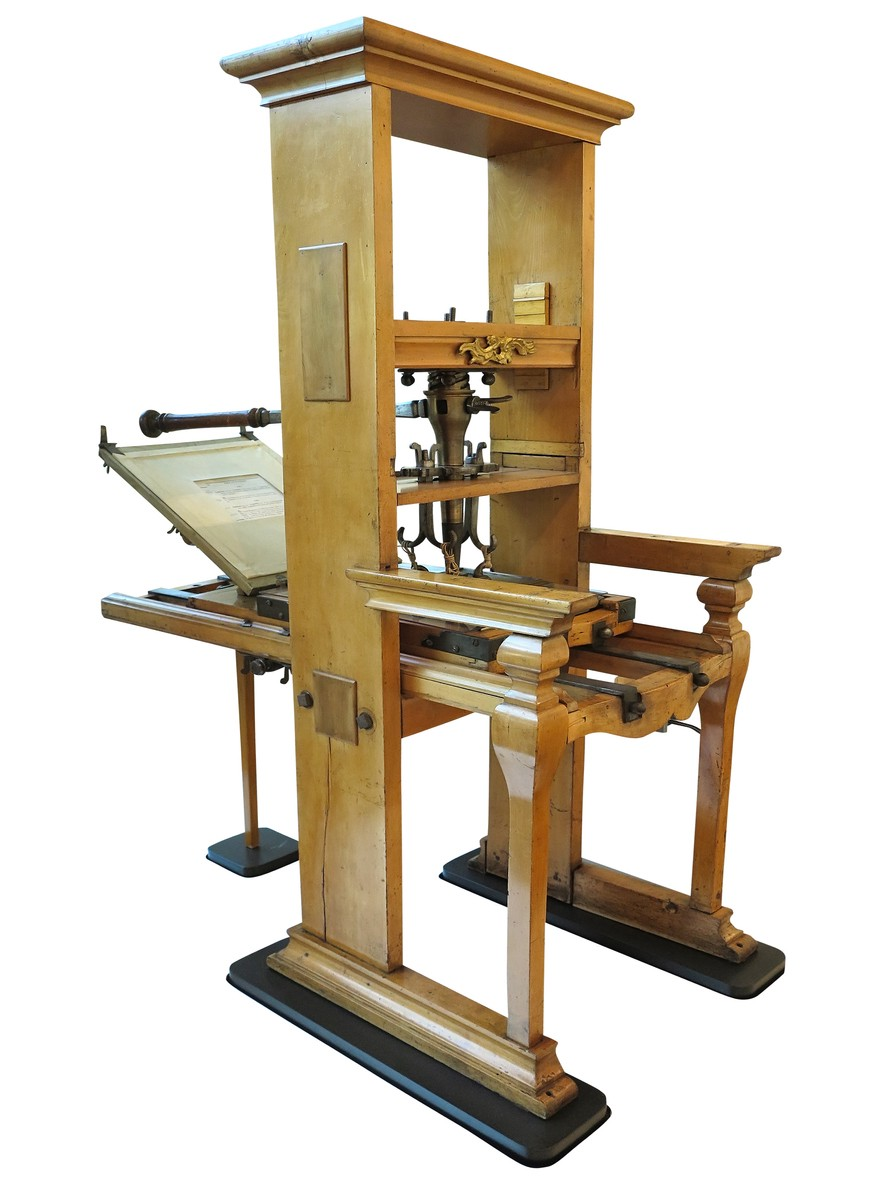 Old printing press similar in style to Gutenberg’s printing house
Old printing press similar in style to Gutenberg’s printing house
Gutenberg built a mechanical machine, the printing press, that allowed printers to greatly speed up the printing process. Movable type printing in Asia is done by applying ink by hand. It wasn’t done with a machine, or with mass-produced metal fonts. The difference is profound. Around 1600, European printing houses could output 1,500 to 3,600 pages per day. In contrast, Chinese printing technology can only complete about 40 pages per day.
There is no James Watt or Johannes Gutenberg when it comes to gunpowder and firearms. Instead, there are several people, most of whom we will never know by name. English monk Roger Bacon and German monk Berthold Schwartz are often mentioned, but we don’t know if Schwartz existed. However, information on firearms in Florence, Italy was recorded as early as 1326. Roger Bacon made the first known description of gunpowder in Europe in 1267.
What is important about this description is that it distinguishes it from early Chinese black powder, which cannot be called gunpowder. It has the same key ingredients: potassium nitrate (KNO3), charcoal (C) and sulphur (S), but much lower levels of potassium nitrate, also known as saltpeter.
There is no James Watt or Johannes Gutenberg when it comes to gunpowder and firearms. Instead, there are several people, most of whom we will never know by name. English monk Roger Bacon and German monk Bertold Schwartz are often mentioned, but we don’t know if Schwartz existed. However, information on guns in Florence, Italy, was recorded as early as 1326. Roger Bacon made the first known description of gunpowder in Europe in 1267.
What is important about this description is that it distinguishes it from early Chinese black powder, which cannot be called gunpowder. It has the same key ingredients: potassium nitrate (KNO3), charcoal (C) and sulphur (S), but much lower levels of potassium nitrate, also known as saltpeter.

Some call this mixture low-nitrate black powder, as opposed to gunpowder, which is high-nitrate black powder. Because the amount of saltpeter is less, the burning speed of black powder is slower. Such black powder is suitable for use in rockets. When making fireworks, it is practical to use slow-burning black powder. However, for bombs and guns we need fast burning black powder. This is what we call gunpowder. Gunpowder will burn in 25 microseconds. This allows us to go from something that provides flashes and stuns to something that provides explosions and can be used in warfare.
The Chinese made the first hand-held weapons that used black powder, called muskets, but because they burned slowly, they acted more like flamethrowers. The Greeks and Byzantines also had similar weapons. Instead of black powder, they used a mixed burner called Greek fire, the exact recipe of which we still don’t know. Fire spears will evolve into hand cannons in China. This is the end of the development of Chinese firearms.
Revolutionizing Gunpowder Production
Europe gets black powder from China. Since then, a parallel development has been taking place. Improvements occur on several axes.
- Make gunpowder burn faster by increasing the amount of saltpeter
- Improve the purity of saltpeter
- Improvements in blending ingredient technology
Saltpeter is one of the most important components of gunpowder. Understanding the evolution of gunpowder manufacturing centers on understanding the production and purification of saltpeter. I wrote an article devoted to how saltpeter was historically produced and refined.
One revelation of this story is that making purer saltpeter requires the development of rather complex operations. Unlike China, Europe has no naturally occurring saltpeter, but relies on a complex fermentation process of urine with soil and animal waste to produce saltpeter. This situation prompted Europeans to conduct more experiments on the purification of saltpeter, which resulted in a higher quality saltpeter than is commonly found in China.
Gunpowder Corning Revolution
The real revolution was the invention of Corning in Germany at the end of the 14th century (1300-1400). Corning is a unique development in Europe that did not happen in China. This development made gunpowder 300% stronger and more practical and safer to use.
Gunpowder before refining is called serpentine. Serpentine is based on dry blending of all ingredients in powder form. There are many problems with mixing gunpowder in this way. It’s quite dangerous because if you’re not careful, you could more easily cause the compound to explode. The second problem is that during transport, the various mixtures start to separate based on density. So when gunpowder is poured into cannons on the battlefield, the end result is poor because the ingredients aren’t mixed properly.
Corning means wet blending. You keep the powder moist while mixing. This makes it safer when mixing. The wet mixture is pressed into a flat sheet and then allowed to dry. After drying, they are carefully disassembled and tumbled in wooden barrels to smooth out the grains. These particles are then sieved to sort the gunpowder by particle size. The gunpowder we are left with is made up of larger particles rather than fine dust. The advantage of this is that in each grain, all the ingredients are properly mixed. We avoid letting the ingredients separate during shipping. It also turns out that fire spreads more easily between these large particles than between dust particles. Combined with a more optimized blend of ingredients, this method gives us a blend that is 3 times more powerful than serpentine.
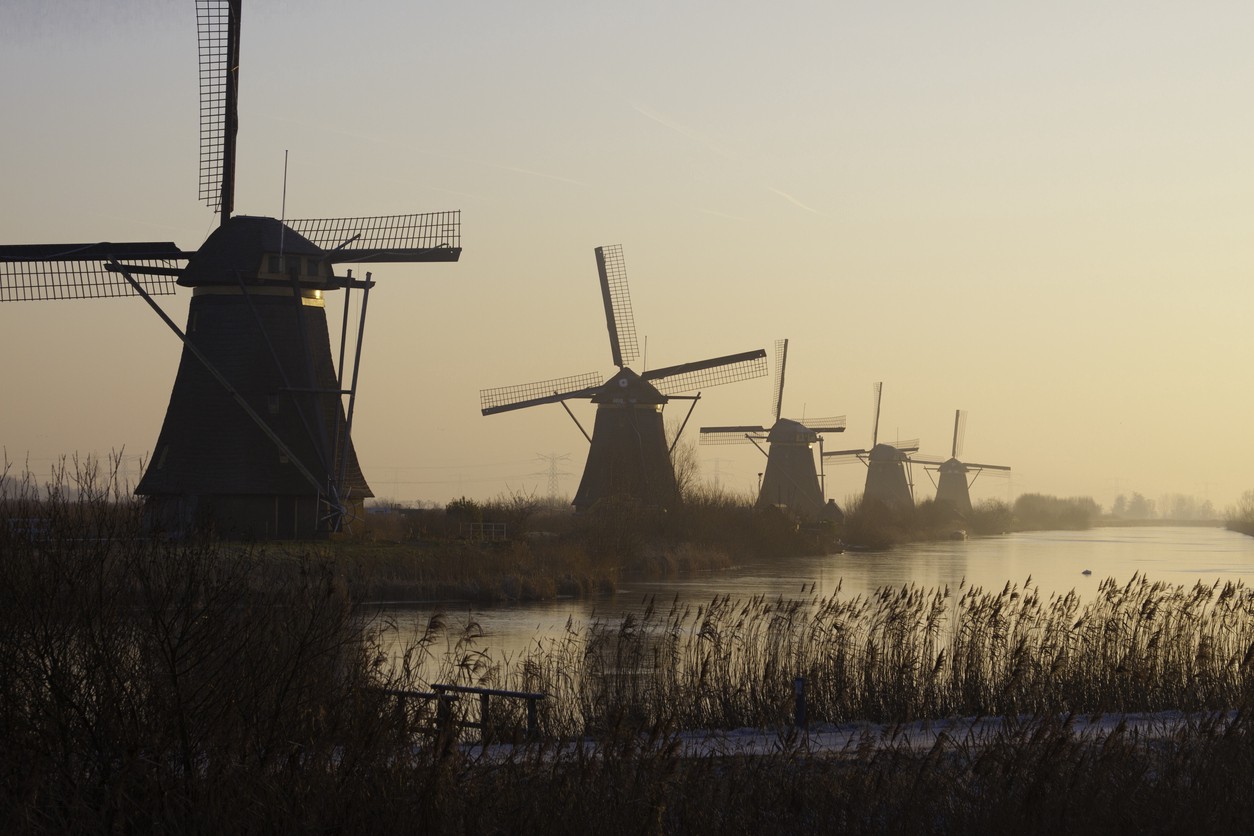 Dutch Windmills / Many historic gunpowder factories were powered by wind and water
Dutch Windmills / Many historic gunpowder factories were powered by wind and water
European mill revolution
Europe during this period also saw more advantages than China. The prevalence of mills. According to Terry Reynolds, the leading technical historian of watermills.
“If there is one key factor that distinguishes Western European technology from Islamic, Byzantine, Indian, and even Chinese technology around 1200 AD, it is the widespread commitment and use of hydropower in the West.”
Europeans didn’t just use mills to grind flour. In Europe, mills are used for various productions. Most important to this story is the use of the grind. In a pulverizer, charcoal and sulfur are first ground into a fine powder. Next, saltpeter, sulphur and charcoal are mixed with water, kneaded and compacted under heavy rotating wheels. The result is gunpowder in flakes, which are later dried and then cut into pieces by a Corning or Kerning mill. The sorted pits of the desired size are dried and mixed with graphite and tumbled in the barrel of the polisher. The graphite coating reduces the tendency of the grains to stick together during storage.
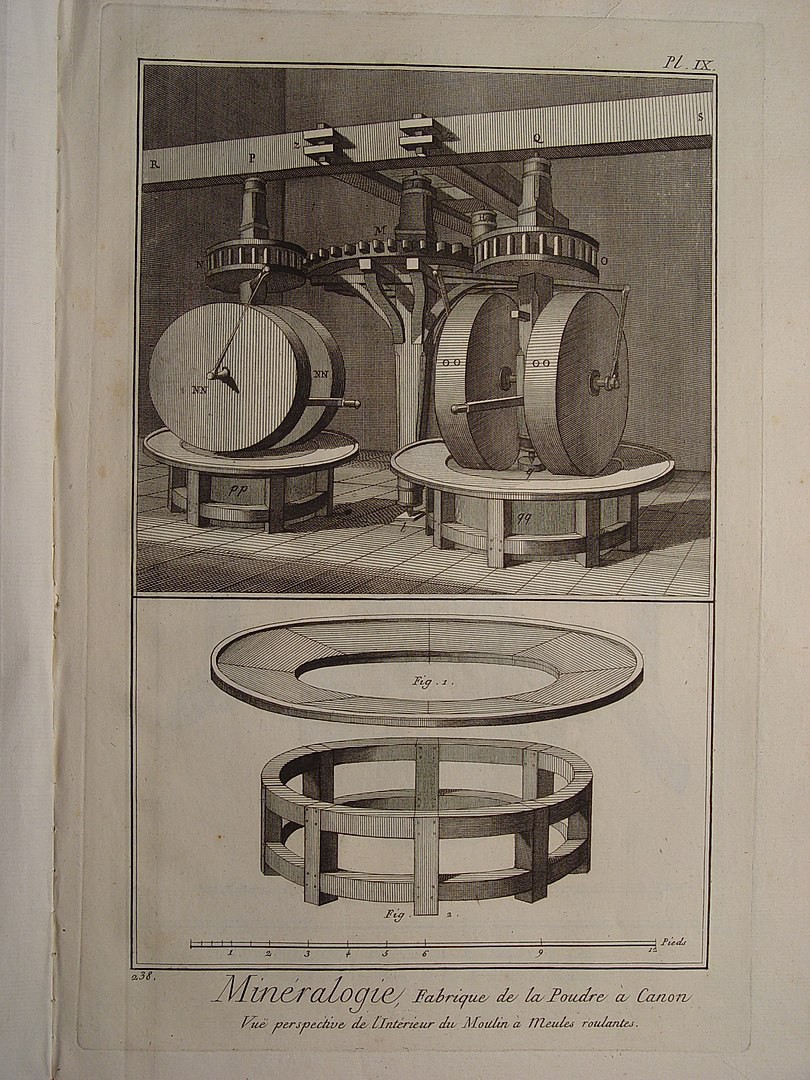 18th century illustration of a grinder
18th century illustration of a grinder
The first water-powered gunpowder factory was established in 1435 near Nuremberg, Germany. In the Netherlands, there are many mills powered by windmills. At its peak, more than 10,000 windmills are in operation in the Netherlands for various industrial purposes. England alone had about 10,000 waterwheels in 1300.
This proto-industrial revolution in Europe enabled Europeans to mass-produce gunpowder at a lower price than could be achieved in the far east and the Muslim world.
The evolution of gunpowder weapons
Chinese gunpowder weapons do not go further than hand cannons. These earliest hand-held firearms were clumsy to operate. Since you have to put a burning fuse into a hole to fire, it’s difficult to stay still and aim. This means you only have one arm to stabilize the hand cannon.
In Europe, guns continue to evolve towards having better firing mechanisms. First the match lock, then the wheel lock, and finally the flintlock. Flintlocks became widely used in Europe in the 1630s. Thus, when China began to engage extensively with Europeans in the 16th century, Europeans had a clear military advantage.
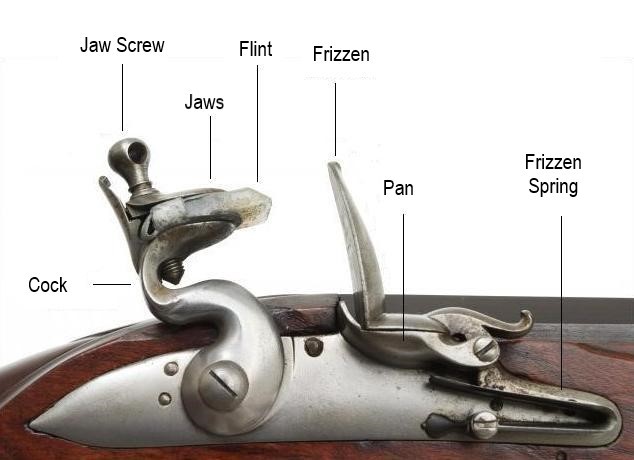 Parts of a flintlock gun
Parts of a flintlock gun
The question is: why did Europeans evolve more advanced guns and better gunpowder? A key reason is that the social, economic and military conditions in Europe are fundamentally different from those in China.
China faced a massive invasion by the Mongols. The Mongol military tactics were based on highly mobile cavalry. Early small arms were too slow to fire and had too short a range to be ineffective for horse archers. Crossbows and bows were effective against the Mongols because they could fire more quickly.
War in Europe is fundamentally different because it is based on constant warfare between independent nations. The countries engaged in an arms race that emphasized armor. Knights, archers and spearmen are getting better and better armored with intricate plate armor.
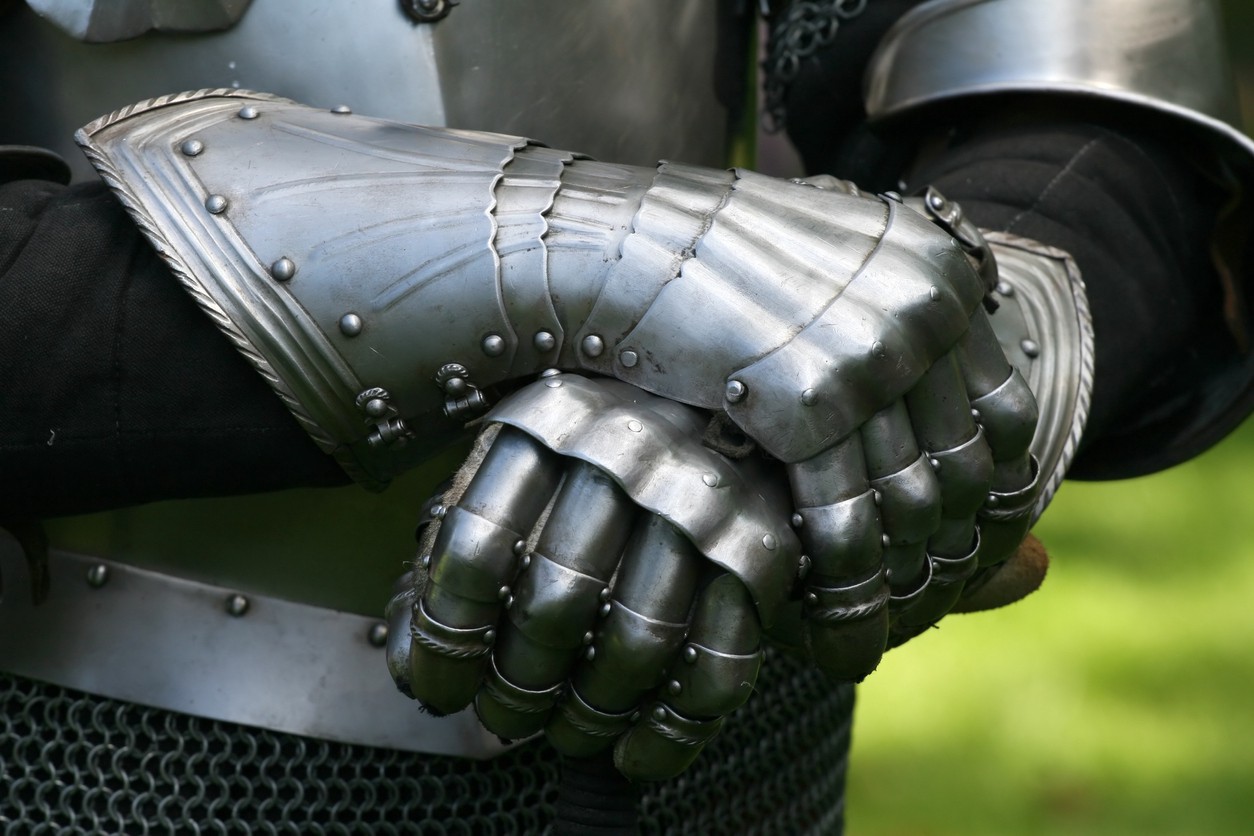 The dominance of heavy armor on the European battlefield drives the development of gunpowder weapons
The dominance of heavy armor on the European battlefield drives the development of gunpowder weapons
Focusing on weapons that can penetrate armor doesn’t make sense in China. The Mongols were nomads, and it was difficult for them to develop a military theory that relied on plate armor. European plate armor is achieved by a large number of blast furnaces and precision forging machines driven by water wheels.
Civilizations outside Europe, such as China, lacked the large number of waterwheels and windmills that Europe had to power an early proto-industrialization. As a result of this process, it became increasingly difficult to penetrate armor. Swordsmen and knights no longer use shields at all. It doesn’t make any sense anymore. No spear or sword could penetrate their armor anyway. As a result, the crossbow became more and more refined in Europe. They evolved complex mechanisms such as a reel and a crane to pull them. They require enormous strength and heavy bows to penetrate heavy armor.
 Heavy bows have become so difficult to load that complex crane-like crank arrangements are required
Heavy bows have become so difficult to load that complex crane-like crank arrangements are required
Thus, gunpowder weapons solved a practical problem for European armies. Reloading and firing hand cannons or crossbows is time consuming. However, heavy crossbows with complex crank mechanisms are slower to reload. As a result, gunpowder weapons became more and more popular.
The use of gunpowder weapons spread rapidly throughout Japan in the 16th century, as evidenced by the fact that the process was widespread. Like Europe, Japan was divided into separate nations at the time, fighting each other in a civil war. Therefore, the social structure of Japan is very similar to that of Europe. The role of samurai in Japan is similar to that of knights in Europe. Castles have a similar importance. When Portuguese and Dutch merchants came to Japan with firearms, their use was quickly adapted in Japan. Blacksmiths in Japan rapidly developed high skills in the manufacture of gunpowder weapons.
Demand drives development. There is also a factor favouring the development of sophisticated weapons in Europe. Europe has something that looks more like a capitalist market economy, while China looks more like a communist command economy in many ways. The Chinese state produces and uses weapons on a large scale. Therefore, the use and development of weapons is highly concentrated. Ordinary citizens do not own and use gunpowder weapons.
In Europe, there is something that looks more like a regular market. Many independent workshops developed weapons and sold them. European armies are largely mercenaries who buy their own equipment. In contrast, China uses a huge army with very standardized equipment that is mass-produced. In Europe, equipment changes are much greater, so there may be more trials.
Europe also has a civilian market of hunters and people seeking self-preservation. Much of the innovation in pistol technology took place in the civilian market. The military would naturally not be keen to equip numerous soldiers with unproven technology. However, individual hunters will be more interested in trying out new designs, which can make their job easier.
European countries can no longer be conservative in their choice of weapons. They faced enemies from all sides, not only other European countries but also the Muslim Empire. By contrast, China has dominated their corner of the world so high that they can ignore innovations in weapon systems and tactics.
Summary
Due to the lack of natural saltpeter, Europe did not have the conditions for the early development of gunpowder. This gave China an early lead, but it forced Europe to spend more effort understanding the chemistry behind saltpeter and how to refine it.
Europe was divided into feudal states with constant wars, which led to the development of heavy armor. The presence of heavy armor facilitated the construction of increasingly heavier and more complex crossbows, which led to gunpowder weapons being the obvious solution to the plate race faced by European nations.
China, as a unified empire, does not face these same military pressures in advancing gunpowder weapons. The Mongols did not use heavy armor, so there was less military urgency for armor-piercing rounds.
The last factor is economic. Europe had access to water and wind powered mills, which made mass production of gunpowder cheaper. These mills reached a level of sophistication not found in the Far East of Asia. For example, in the 16th century, when the Dutch were building gunpowder factories in Indonesia, spies were sent to observe how the Dutch made gunpowder in an attempt to replicate their craft.
Combining these factors, Europeans developed purer saltpeter, higher saltpeter content, and corrosive gunpowder. All these factors combine to make gunpowder 8 times stronger than the early black powder developed by the Chinese.
resource
I found some useful articles and papers while researching this story.
- Pulverizer / Wikipedia
- Watermill industrial energy in the European economy, 5th-18th centuries: the limits of power
- Gunpowder Encyclopedia – Interesting details about the different components of saltpeter, sulphur and charcoal used throughout the ages.
Quick Facts
- ? Design: A Brief History of Numeric Keypads
- ?Art: A Visual Guide to the Aztec Pantheon
- ?️Society: The Great Depression: Japan in the 1990s
- ? Gaming: Teens are rewriting the possibilities of world Tetris competition
- ?Games: Teardown game level design and art from Stray
donate
If you find “Shyrism.News” valuable, please support and share it with your friends or social networks.
Thank you friends for tipping, please be sure to note your salutation or email address to avoid data loss when you clean up your account.
This article is reprinted from: https://shyrz.me/news-19-constant-growth/
This site is for inclusion only, and the copyright belongs to the original author.

